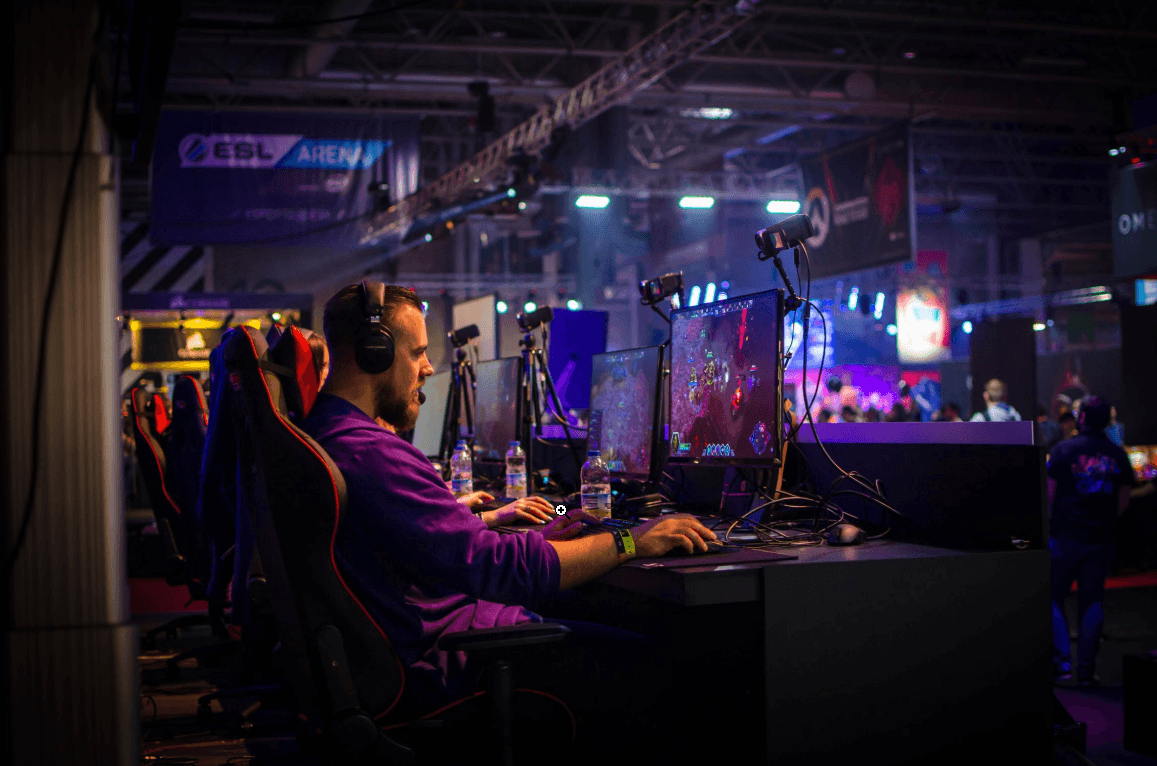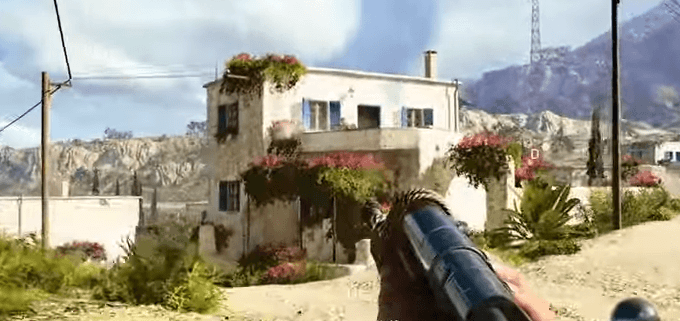
If you have high ping (packet Internet groper) in battle royale gaming, it’s very likely that you’re also experiencing major lag spikes at the same time. As a member of competitive online games, battle royale games require more in stable network connection so high ping will probably ruin your gaming experience and render the game unplayable. However, there’s no need to get depressed so soon – you still have a list of tricks to fix this problem.
How do I determine if my ping is high?
Ping, also referred to as latency, measures the round-trip time for data sent from your computer to a central server that are echoed back to the source. The unit of ping or latency is milliseconds, or ms for short. Answers may vary if you’d like to know what is a good ping time and what is not. In the most generic sense, there’s no such a standard for ping time because latency is largely determined by the distance between you and the game’s server. But if you’re experiencing noticeable lag spikes in battle royale gaming, that means your ping is very likely to be high.
Usually if your ping time is below 30 ms, you can play online games rather smoothly; but if it’s above 100 ms, lag issues will probably come along. When you find out that you’re actually having high ping, then you should be well aware of your network status.
7 fixes for your high ping issue
Here’re 7 fixes that prove to be useful for many battle royale gamers. You don’t have to try them all; just work you way down the list until you find the one that works for you.
Fix 1: Download the latest game patch
Fix 2: Restart your router & modem
Fix 3: Close bandwidth hogging applications
Fix 6: Update your Windows system and drivers
Fix 7: Swap Wi-Fi to an Ethernet connection
Fix 1: Download the latest game patch
If you’re playing more than one games, try to launch them and see whether you have lag spikes in all games or only a few of them. If you get lag spikes in all games, then the cause should lie in your network; otherwise it’s the games’ servers to blame.
Once you figure out that you have lag spikes only in certain games, you should ask for assistance from their developers. You can either contact them initiatively, or wait until they fix the problems themselves. If so many players have reported the same issue to them, the game developers will try to offer solutions by releasing new game patches. But usually you don’t need to worry about missing these updates because most games will download the latest patches automatically when you launch them.
For more information about the lately released patches, you should visit the game’s official website and search for related news.
Fix 2: Restart your router & modem
You should restart your modem and router especially when they haven’t been switched off for a long time. Just give them some time to cool off and clear up the cache. Here’s how to do it:
1) Unplug both your router and modem.


2) Wait at least 30 seconds to let the two machines cool down a bit.
3) Plug the modem back in and wait until the indicator lights are back to their normal state.
4) Plug the router back in this time. Likewise, wait until the indicator lights are back to their normal state.
5) Now that you routers and modem have been restarted properly, you can launch the game again to see if the high ping issue goes away.
Fix 3: Close bandwidth hogging applications
If you have too many bandwidth hogging applications opened in the background, that may slow down your network and even triggers high ping issue in battle royale gaming. To solve your problem, you need to close these applications before playing the game. Here’s how to do it:
1) On your keyboard, press the Windows Logo key and R at the same time to invoke the Run dialog box. Type in resmon and hit Enter.

2) Here pops up the Resource Monitor window. Click on the Network tab and pay attention to the Total (B/sec) column. In this way, you’ll get an intuitive understanding of what process is now using the most of your network resources.

3) Right-click on the application that occupies much of your bandwidth to open its context menu. Then select End Process.

4) If prompted for permission, click End process.

5) Repeat the steps above until you’ve closed all the bandwidth hogging programs.
Hopefully your high ping issue has gone by now. If not, please try out the next fix and see if it works for you.
Fix 4: Change your DNS server
Try to switch your ISP’s DNS server to the Google Public DNS address. This may improve the resolve time and provide you with more security online. Check it out and see if that solves your problem.
1) On your keyboard, press the Windows Logo key and R at the same time to open the Run dialog box. Type in control panel and press Enter.

2) Open the drop-down list next to View by: and select Category. Next, click View network status and tasks.

3) In the next window, click Change adapter settings.

4) Right-click on your current network and select Properties.

5) Double-click Internet Protocol Version 4 (TCP/IPv4) to view its properties.

6) In the pop-up window, select these two options: Obtain an IP address automatically and Use the following DNS server addresses.
For the Preferred DNS server, enter 8.8.8.8 to replace the primary IP address; for the Alternate DNS server, enter 8.8.4.4. Then click OK to save the changes.

If this fix doesn’t work for you, you may try the next one.
Fix 5: Modify your registry
For many people, this fix seems a bit hard to understand – but don’t worry, it will be more friendly to you after being broken down into a few simple steps. Just be patient to follow the steps below and see whether tweaking your registry can manage to deal with the trouble. There’re three things you should do here:
Create a backup for Windows Registry
Before modifying your registry, you’re suggested to create a backup for it. Here’re the steps:
1) On your keyboard, press the Windows Logo key and R at the same time to invoke the Run dialog box. Type in regedit, and then click OK. If prompted for permission, click Yes to continue.
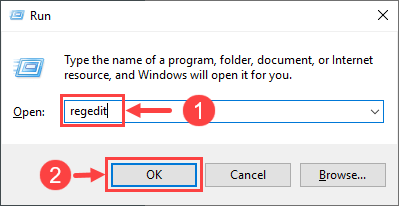
2) On the menu bar, select File. Then, click Export….

3) Under Export range, select All. Then, create a name for your backup file (the name should easily reminds you of the file’s functions) and choose a folder to save it. After that, click Save to keep the changes.
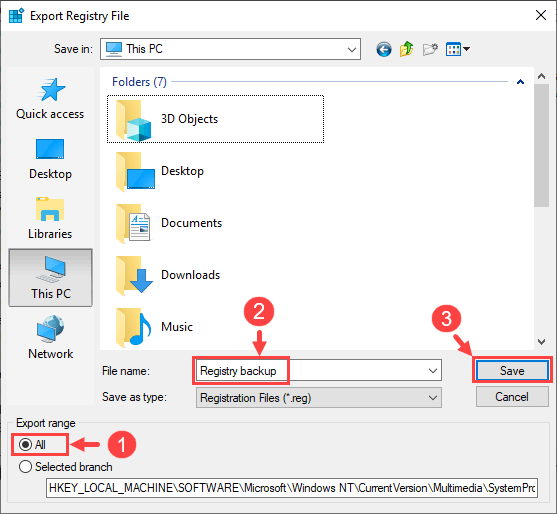
4) If your computer fails to run properly after you make tweaks to the registry, then you can reverse all the changes with your backup file.
1) Repeat Step 1 to open Registry Editor.
2) Select File from the menu bar and click Import….
3) Locate the backup copy and open it.
So this is how you revert the registry to its previous version. For more information, please refer to this site from Windows Support.
After creating a backup copy, now you can get down to modifying Windows Registry.
Reset Network Throttling Index
1) In Registry Editor, copy the following path and paste it to the address bar. Then hit Enter to reach the desired registry key.
ComputerHKEY_LOCAL_MACHINESOFTWAREMicrosoftWindows NTCurrentVersionMultimediaSystemProfile
If you don’t want to use this path, you may also navigate to the key from the left pane in Registry Editor.
2) If NetworkThrottlingIndex is already there on the right panel (as shown below), you can skip this step and head to the next one.

But if there’s no NetworkThrottlingIndex on the right panel, simply right-click on an empty area and create a new DWORD (32 bit) Value. Then, name it NetworkThrottlingIndex.

3) Double-click on NetworkThrottlingIndex and set its Value data to FFFFFFFF. Then, click OK to save the change.
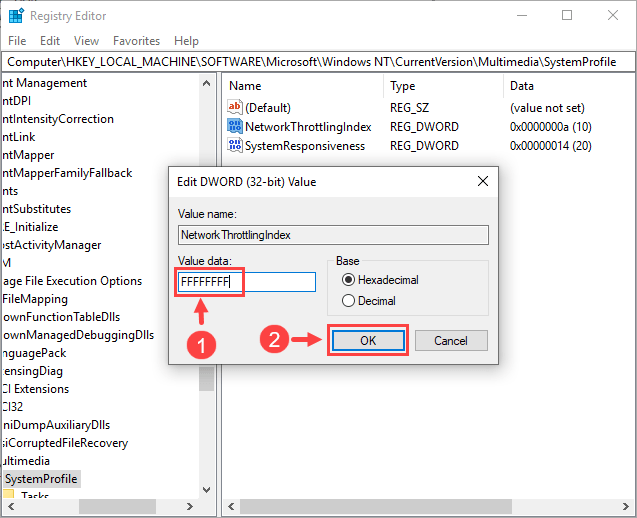
Disable Nagle Algorithm
1) On your keyboard, press the Windows Logo key and R at the same time to invoke the Run dialog box. Type in cmd and then hit Enter.
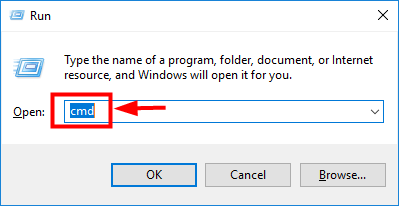
2) Here pops up the Command Prompt window. Type ipconfig and then press Enter. This command will display the IP address information of your computer.

3) Locate the network adapter you’re using and take a note of its IPv4 Address.

4) Go back to Registry Editor. Copy the following path and paste it to the address bar. Then hit Enter to reach the desired registry key.
ComputerHKEY_LOCAL_MACHINESYSTEMCurrentControlSetServicesTcpipParametersInterfaces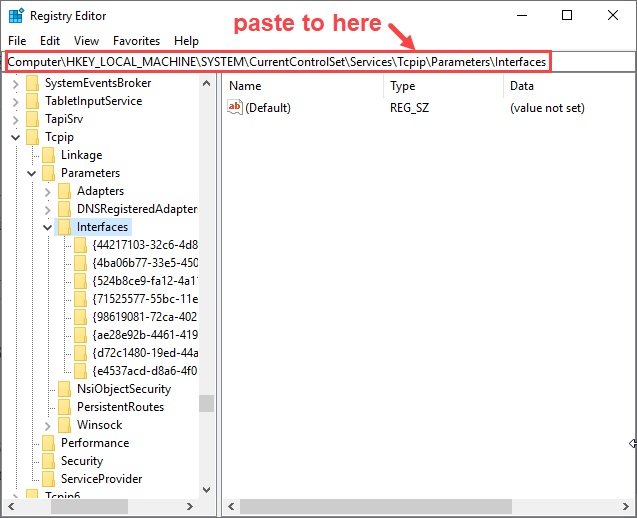
If you don’t want to use this path, you may also navigate to the key from the left pane in Registry Editor.
5) In the left pane, there’s a list of registry keys under Interfaces. Open these keys one by one until you find the one that contains a registry value named DhcpIPAddress sharing the same data with your IPv4 address collected in Step 3.
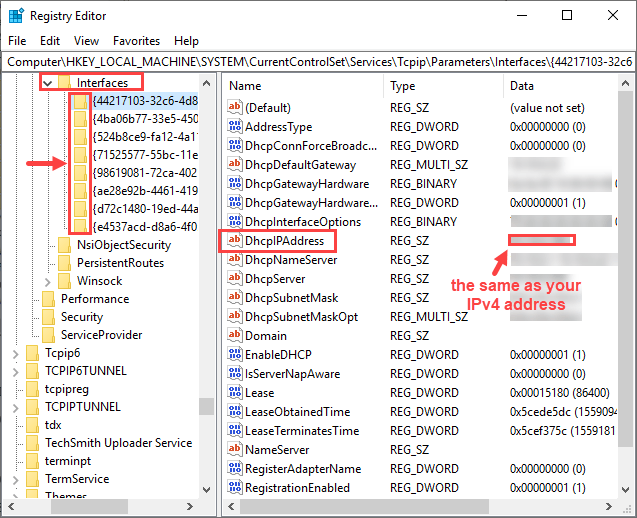
6) Once you’ve found out the matched key, right-click on an empty space of that key and create a new DWORD (32 bit) Value. Then, name it TcpAckFrequency.

7) Double-click on TcpAckFrequency and set its Value data to 1.
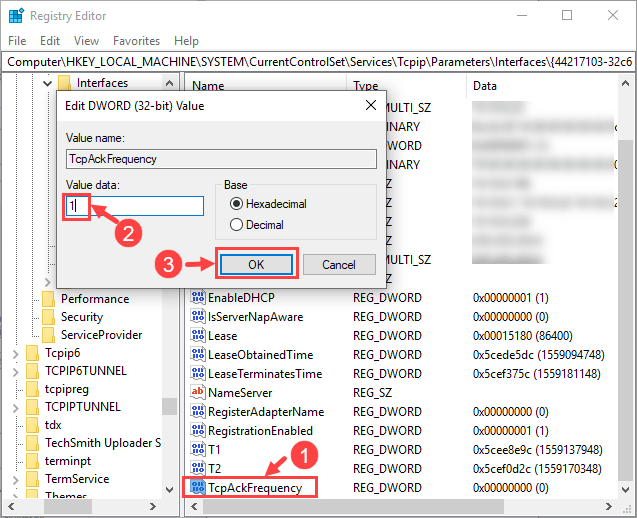
8) Repeat Step 6 to create two more values named TCPNoDelay and TcpDelAckTicks respectively. Set the Value data of TCPNoDelay to 1 and TcpDelAckTicks to 0. Then click OK to save the changes.
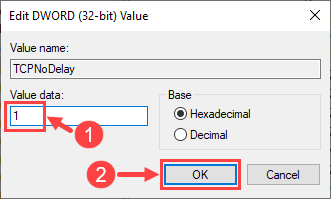

So this is what you should do to modify the registry. Relaunch your game and check if your high ping issue still exists. If so, please proceed to the next fix.
Fix 6: Update your Windows system and drivers
Make sure that you keep your Windows operating system and the drivers up to date because an out-dated system or driver may give rise to your high ping issue. Here’s how to do it:
Update your Windows operating system
1) On your keyboard, press the Windows Logo key and S at the same time to invoke the search box. Then type in update and click the Check for updatesresult.
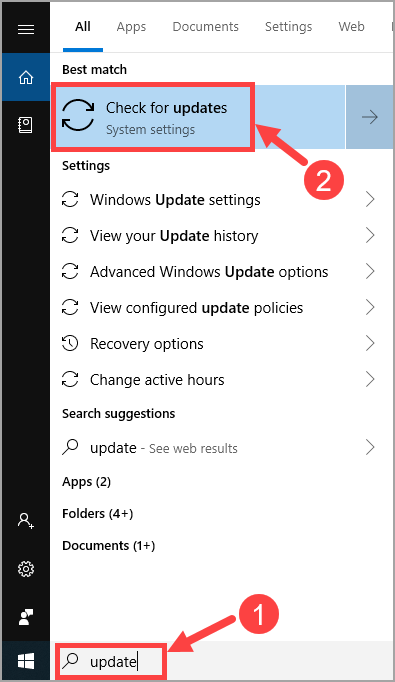
2) Click Check for updates.
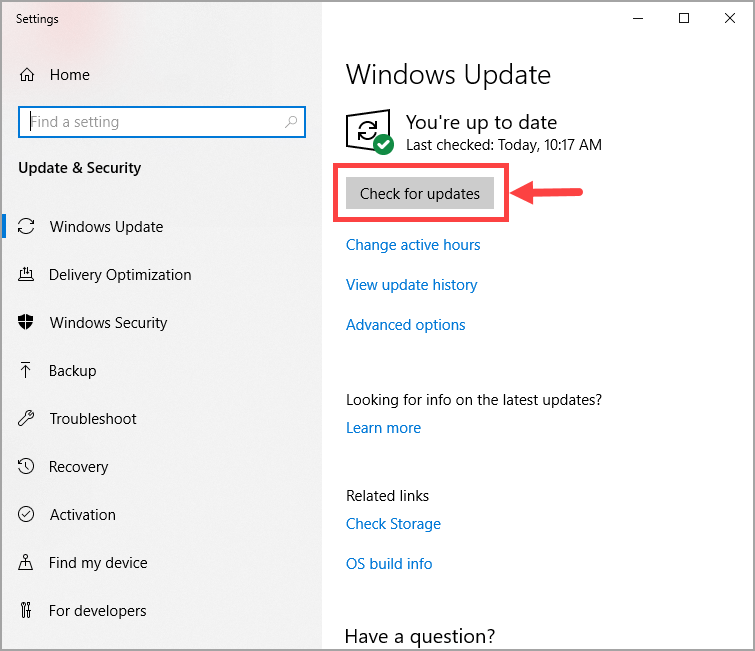
3) Wait till the checking process finishes and then follow the onscreen instructions to perform this update.
Update your device drivers
If you don’t have the time, patience or computer skills to update your device drivers manually, you can do it automatically with Driver Easy.
Driver Easy will automatically recognize your system and find the correct drivers for it. You don’t need to know exactly what system your computer is running, you don’t need to risk downloading and installing the wrong driver, and you don’t need to worry about making a mistake when installing. Driver Easy takes care of everything.
You can update your drivers automatically with either the FREE or the Pro version of Driver Easy. But with the Pro version it takes just 2 clicks:
1) Download and install Driver Easy.
2) Run Driver Easy and click the Scan Now button. Driver Easy will then scan your computer and detect any problem drivers.
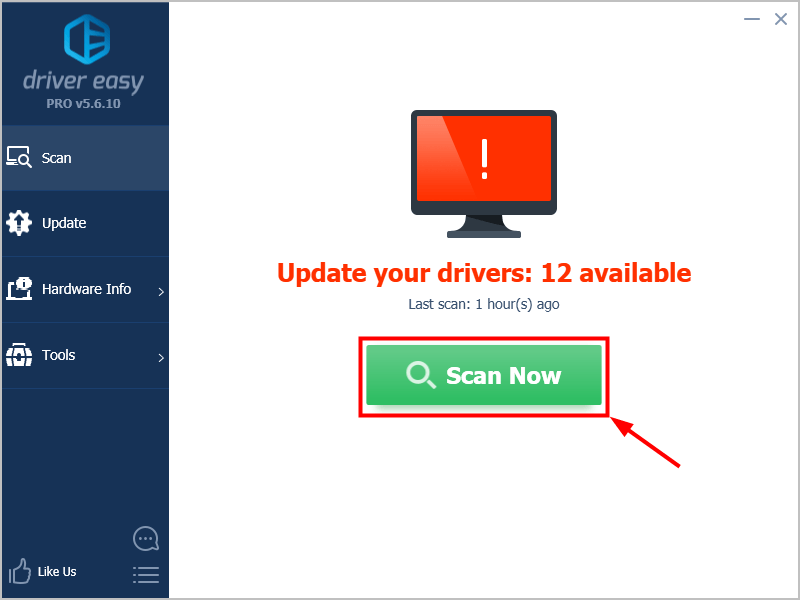
3) Click Update All to automatically download and install the correct version of all the drivers that are missing or out of date on your system (this requires the Pro version – you’ll be prompted to upgrade when you click Update All).

Note: You can do it for free if you like, but it’s partly manual.
Fix 7: Swap Wi-Fi to an Ethernet connection
If none of the fixes above work for you, then maybe you should turn your eyes upon the Wi-Fi signal around. Admittedly, a wireless network is not as stable as a wired one so you’ll get more interruption if your computer is connected to Wi-Fi. For example, when you’re playing battle royale games in a room far away from your router, the Wi-Fi signal you receive can be rather weak, causing the high ping issue in games.
To solve this problem, you’re suggested to swap Wi-Fi to an Ethernet connection, but this is not practical for everyone. As an alternative, you may buy a powerline Ethernet adapter which can extend the reach of your home network to places with poor wireless coverage. Once your network problem is solved, your high ping issue in battle royale gaming may also be fixed once and for all.
Also, you should avoid possible wireless interference that weakens your Wi-Fi signal such as cordless phones and microwave ovens. Place them far away from your router, or simply move your laptop to a new location with stronger Wi-Fi signal.
Until now, have you managed to fix the high ping issue in battle royale gaming? Please feel free to leave a comment below if you have further questions or other methods to share. Hopefully you’ll have wonderful gaming experience and work your way up to the best player!






